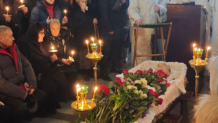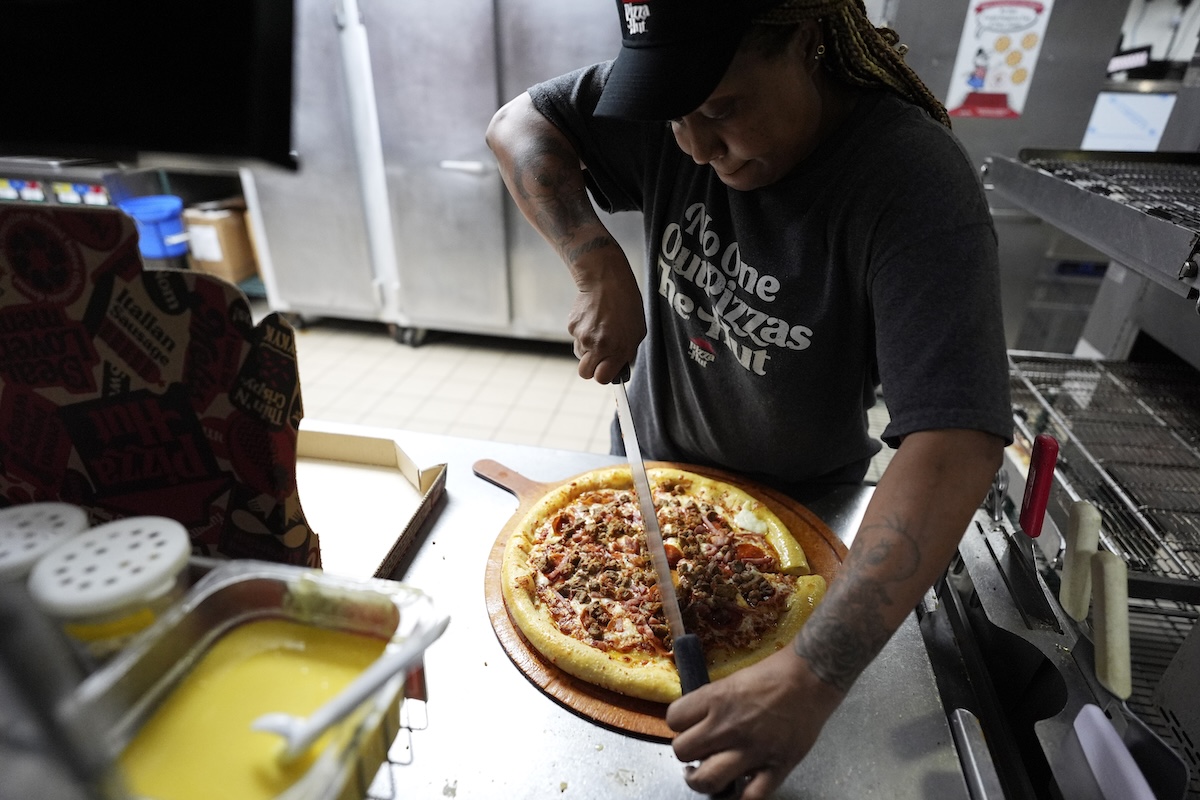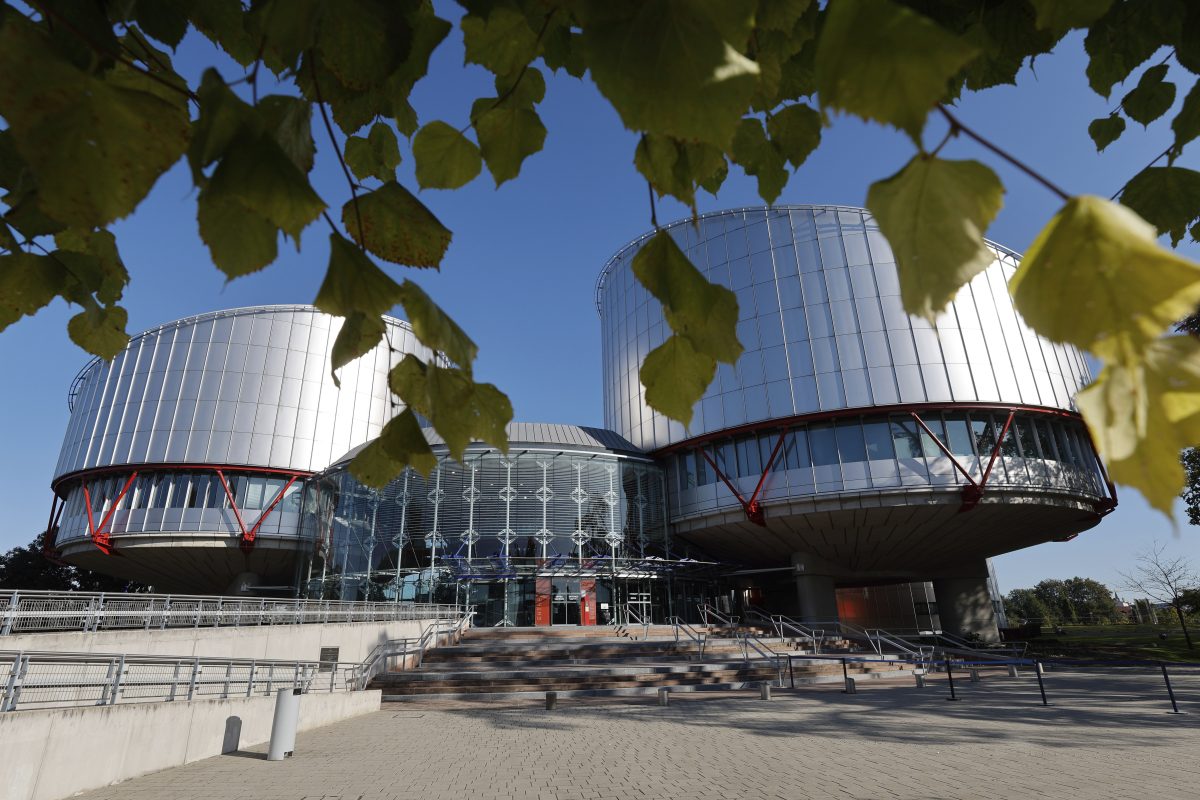A funeral service was held Friday in Moscow for Russian opposition leader Alexei Navalny.
Under a heavy police presence, thousands of people bade farewell Friday to opposition leader Alexei Navalny at his funeral in Moscow after his still-unexplained death two weeks ago in an Arctic penal colony.
Navalny was buried at a cemetery in the snowy southeastern outskirts of the capital after a short Russian Orthodox ceremony, with vast crowds waiting outside the church and then streaming to the fresh grave of President Vladimir Putin's fiercest critic with flowers and anti-government chants.
Although riot police set up barricades at both the church and cemetery, no detentions were reported.
Navalny's widow, Yulia, who was not seen at the funeral, thanked him for “26 years of absolute happiness."
Get top local stories in Connecticut delivered to you every morning. Sign up for NBC Connecticut's News Headlines newsletter.
“I don't know how to live without you, but I will try to do it in a way that you up there are proud of me and happy for me,” she wrote on Instagram.
The service followed a battle with authorities over the release of his body. His team said several Moscow churches refused to hold the funeral for the man who crusaded against official corruption and organized massive protests. Many Western leaders blamed the death on the Russian leader, an accusation the Kremlin angrily rejected.
Navalny’s team eventually got permission from the Church of the Icon of the Mother of God Soothe My Sorrows, which was encircled by crowd-control barriers on Friday. Hours before the funeral started, hundreds waited to enter under the watch of police.
U.S. & World
As his coffin was removed from the hearse and taken inside the church, the crowd waiting outside broke into respectful applause and then chanted: “Navalny! Navalny!” Some also shouted, “You weren’t afraid, neither are we!” and later “No to war!” “Russia without Putin!” and “Russia will be free!”
Western diplomats, including U.S. Ambassador Lynne Tracy, were among those who attended, along with presidential hopefuls Boris Nadezhdin and Yekaterina Duntsova. Both wanted to run against Putin in the upcoming presidential elections and opposed his war in Ukraine; neither was allowed on the ballot.
Images from inside the church showed an open casket with Navalny’s body covered with red and white flowers, and his parents, Lyudmila and Anatoly, sitting beside it.

Navalny's closest associates live outside Russia and made comments in a livestream of the funeral on his YouTube channel, their voices occasionally cracking with emotion.
“Those people who follow what is happening, it is of course obvious to them that this man is a hero of our country, whom we will not forget," said Nadezhda Ivanova of Kaliningrad, who was outside the church with other supporters. “What was done to him is incredibly difficult to accept and get through it."
Kremlin spokesman Dmitry Peskov urged those gathering in Moscow and other places not to break the law, saying any “unauthorized (mass) gatherings” are violations.
After the short church service, thousands marched to the nearby Borisovskoye Cemetery, where the police were also out in force.
With the casket open, Navalny’s mother and father stroked and kissed his head. A large crowd gathered at the cemetery's gates, chanting: “Let us in to say goodbye!”
The coffin was then lowered into the ground. In keeping with his irreverent sense of humor, music from the “The Terminator 2" was played, a movie his allies said he considered “the best in the world.”
Mourners streamed by his open grave, tossing handfuls of soil onto the coffin as a large crowd waited at the cemetery's entrance. As dusk fell, workers shoveled dirt into the grave while Lyudmila Navalnaya watched. A mound of flowers, funeral wreaths, candles and a portrait of Navalny sat nearby.
Lyudmila Navalnaya spent eight days trying to get authorities to release the body following his Feb. 16 death at Penal Colony No. 3 in the town of Kharp, in the Yamalo-Nenets region about 1,900 kilometers (1,200 miles) northeast of Moscow.
Even on Friday itself, the morgue where the body was being held delayed its release, according to Ivan Zhdanov, Navalny's close ally and director of his Anti-Corruption Foundation.
Authorities originally said they couldn't turn over the body because they needed to conduct post-mortem tests. Navalnaya made a video appeal to Putin to release it so she could bury her son with dignity.
At least one funeral director said he had been “forbidden” to work with Navalny’s supporters, his spokeswoman Kira Yarmysh said on social media. They also struggled to find a hearse.
“Unknown people are calling up people and threatening them not to take Alexei’s body anywhere,” Yarmysh said Thursday.
Navalny had been jailed since January 2021, when he returned to Moscow to face certain arrest after recuperating in Germany from nerve agent poisoning he blamed on the Kremlin.
His Foundation for Fighting Corruption and his regional offices were designated as “extremist organizations” by the Russian government in 2021.
His widow accused Putin and Moscow Mayor Sergei Sobyanin of trying to block a public funeral.
“We don’t want any special treatment — just to give people the opportunity to say farewell to Alexei in a normal way,” Yulia Navalnaya wrote on X, the platform formerly known as Twitter. In a speech to European lawmakers on Wednesday, she also expressed fears that police might interfere with the gathering or would "arrest those who have come to say goodbye to my husband.”
Moscow authorities refused permission for a separate memorial event for Navalny and slain opposition leader Boris Nemtsov on Friday, citing COVID-19 restrictions, according to politician Yekaterina Duntsova said. Nemtsov, a 55-year-old former deputy prime minister, was shot to death as he walked on a bridge adjacent to the Kremlin on the night of Feb. 27, 2015.
Yarmysh also urged Navalny's supporters around the world to lay flowers in his honor Friday.
“Everyone who knew Alexei says what a cheerful, courageous and honest person he was,” Yarmysh said Thursday. “But the greater truth is that even if you never met Alexei, you knew what he was like, too. You shared his investigations, you went to rallies with him, you read his posts from prison. His example showed many people what to do when even when things were scary and difficult.”



